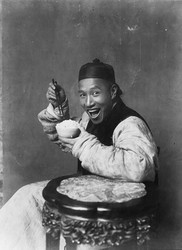

Nah, the community description here says:
This is a community focused on cyberpunk as a genre of fiction. Please post any news articles about our real world slipping into a dystopian nightmare at: !aboringdystopia@lemmy.world


Nah, the community description here says:
This is a community focused on cyberpunk as a genre of fiction. Please post any news articles about our real world slipping into a dystopian nightmare at: !aboringdystopia@lemmy.world
OK so Arthur Holmwood… I think he’s one of the guys who wanted to bang Lucy, right? The others were an American, and a guy who ran a psych ward and “did experiments” on his patients… So was Arthur the one who actually bagged her? I did a keyword search and they refer to him as “Hon.” which I guess means he’s also a lawyer? Seems like an unremarkable guy. In THE DRACULA POLYCULE I guess he’d be the guy they just keep around bc he has a car and “connections”. Oh yeah Van Haling would be some crackpot who’s always talking about ancient aliens and illuminati and breaks into cemeteries and morgues bc he wants to “explore the bodies”, he got expelled from an Amsterdam Univ. because of that, he ends up getting the police after them and turning into an informer, he might be the antagonist actually.


lolz big E is thrashing that man while keeping one hand behind his back…
I think I know what happens if you fall behind in payments…




see this summary of how it’ll work:


so… if we’re going to have AI-generated content, consumed by bots… and then that’s going to be summarized with engagement metrics… why don’t we cut out the middleman and just generate the metrics?


Because your AI companions will want to talk about it tomorrow.
Why don’t they put Wobbuffet in the mix? I bet he’s pretty soft.
Anyone who wears the grater helmet is automatically nicknamed “scarface”.
Looks like those Romans practiced castrametation .
Killer song. According to their bandcamp page, “Vocal samples consist mainly of recitations quoting the last words of persons that were about to receive the death sentence.”
But what if the kid listens to Bauhaus and Siouxsie but just doesn’t dress the part?

You neglected to tell me how I should vote for class president.
(imho John Heder’s best performance was in “Blades of Glory” tho…)
I mean look at it from Doc Stewart’s point of view. Which is more likely:
Occam’s Razor says…


Have you taken a look at the plato.stanford.edu entry on such, specifically the bibliography?
https://plato.stanford.edu/entries/thought-experiment/#Bib
edit:
The number of papers, anthologies, and monographs has been growing immensely since the beginning of the 1990s. It might be useful to highlight that in existing literature, Kühne (2006) remains the most substantial historical study on the philosophical exploration of thought experiments. And Sorensen (1992) remains the most comprehensive philosophical study of thought experiments. More than other monographs both of these studies well exceed the author’s own systematic contribution to what is widely considered the primary epistemological challenge presented by thought experiments. Also, this bibliography does not include the many (we count about eight) popular books on thought experiments (like Wittgenstein’s Beetle and Other Classical Thought Experiments by Martin Cohen); nor do we list fiction that is related to the subject (like The End of Mr. Y by Scarlett Thomas, or God’s Debris by Scott Adams). Further, for undergraduate teaching purposes one might want to consider Doing Philosophy: An Introduction Through Thought Experiments (edited by Theodore Schick, Jr. and Lewis Vaughn, fifth edition, 2012, Boston: McGraw Hill Higher Education), and chapter 5 of Timothy Williamson’s short introduction to philosophical method (Oxford University Press, 2020). Moreover, a number of philosophical journals have dedicated part or all of an issue to the topic of thought experiments, including the Croatian Journal of Philosophy (19/VII, 2007), Deutsche Zeitschrift für Philosophie (1/59, 2011), Informal Logic (3/17, 1995), Philosophica (1/72, 2003), Perspectives on Science (2/22, 2014), Berichte zur Wissenschaftsgeschichte (1/38, 2015)), as well as TOPOI (4/38, 2019), HOPOS (1/11, 2021), and Epistemologia (12/2022). Furthermore, a companion to thought experiments exists now: The Routledge Companion to Thought Experiments was published in 2017. Each includes substantial state of the art reports.


deleted by creator


From “vibe” I’d say Pittsburgh, PGH folks are notoriously blunt and honest if you’re doing something they don’t like.
From “history” see the following:
QUESTION: in what city does Everett True live? ANSWER: I’m not sure if there’s a canonical answer, but FWIW the cartoonist Condo lived in Ohio (Toledo, Cleveland, and Findlay) from 1882 to some time after 1910 (source) (source) and according to an interview with the New Orleans States on 10/2/1917, Condo based Everett True on annoyances he saw around him:
Something after this fashion, Condo does his work: He walks around the block until he finds a human pest and he sicks Everett one that particular pest—on paper of course. For example:
“An acquaintance told me people pestered him into buying a Liberty bond,” recounted Condo. “So he bought the smallest one he could get—$50. He’s rich. It made me so mad I wanted to kick him.”
Condo didn’t dare to do that so he had Everett administer the punishment.
And that’s the way Everett True first broke into print. Condo came to the office one morning after a neighbor’s rasping phonograph had annoyed him unusually the evening before—kept him awake, in fact, long after he had retired.
Why wasn’t there someone to put a machine like that out of business, or to teach the owner of the machine a practical lesson, thought Condo. And before the day was over Everett was born—and the never-ending procession of pests has kept him busy ever since.
point taken. as punishment, I plan to actually watch this movie. looks like it is indeed on tubi.
edit: omfg I was only able to watch the first 15 minutes, it’s pretty bad, even for a b movie.
Horsefeathers!